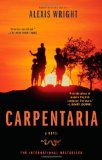Summary | Excerpt | Reading Guide | Reviews | Beyond the Book | Read-Alikes | Genres & Themes | Author Bio

A Novel
by Alexis WrightThis article relates to Carpentaria
 Carpentaria is essentially a novel about the clash of cultures, told from the perspective of the Aboriginal people of Australia. Just as the book illustrates, there is still debate in Australia about who can legitimately claim rights to the land - indigenous Australians, or descendants of the original European settlers. From the earliest contact with British settlers through the reeducation campaigns of the late twentieth century, the Aboriginal peoples have been effectively marginalized from democratic society.
Carpentaria is essentially a novel about the clash of cultures, told from the perspective of the Aboriginal people of Australia. Just as the book illustrates, there is still debate in Australia about who can legitimately claim rights to the land - indigenous Australians, or descendants of the original European settlers. From the earliest contact with British settlers through the reeducation campaigns of the late twentieth century, the Aboriginal peoples have been effectively marginalized from democratic society.
As did many colonial regimes, the British colonizers of Australia viewed the land in their newly "discovered" country as belonging to no one, and thus open to appropriation. This in spite of aboriginal patrimonies that stretched back many thousands of years. After centuries of what amounts to legally sanctioned theft, the Australian government changed its laws to recognize a form of Aboriginal legal custom known as Native Title. The Native Title Act, adopted in 1993, stipulates that Australian common law recognize some forms of property rights established by Aboriginal custom, and so grants the first inhabitants of Australia some redress for their longstanding grievances.
Though it is surely no panacea for the dilemmas of ethnic politics in Australia, this recognition of indigenous land rights is a historic milestone. For centuries, Aboriginals have fought in various ways against the injustices of colonial occupation. More recently, many Aboriginals, including Alexis Wright, fought for the recognition of native rights to the land. The debate about Native Title is tied to larger problems of inequality, and in this sense the Native Title Act is the culmination of a broader struggle for Aboriginal rights.
A quintessential example of this larger struggle is the stockyard strike of 1946, which though principally about wages, forced the Australian government to nominally recognize Aboriginals as equal to their white counterparts. By the 1970s, Aboriginals had begun to pursue legal recognition of native lands that they and their communities had lived on for centuries, but that Australian law did not recognize as theirs. The Aboriginal Land Rights Act of 1976 was the first Australian law that allowed a claim of title based on traditional association with property. A number of other landmark cases before and after the Native Title Act have served as the legal forum for a major national debate on the nation's colonial past and the politics of race.
Key to Images
Filed under Society and Politics
![]() This "beyond the book article" relates to Carpentaria. It originally ran in May 2009 and has been updated for the
April 2010 paperback edition.
Go to magazine.
This "beyond the book article" relates to Carpentaria. It originally ran in May 2009 and has been updated for the
April 2010 paperback edition.
Go to magazine.






Your guide toexceptional books
BookBrowse seeks out and recommends the best in contemporary fiction and nonfiction—books that not only engage and entertain but also deepen our understanding of ourselves and the world around us.